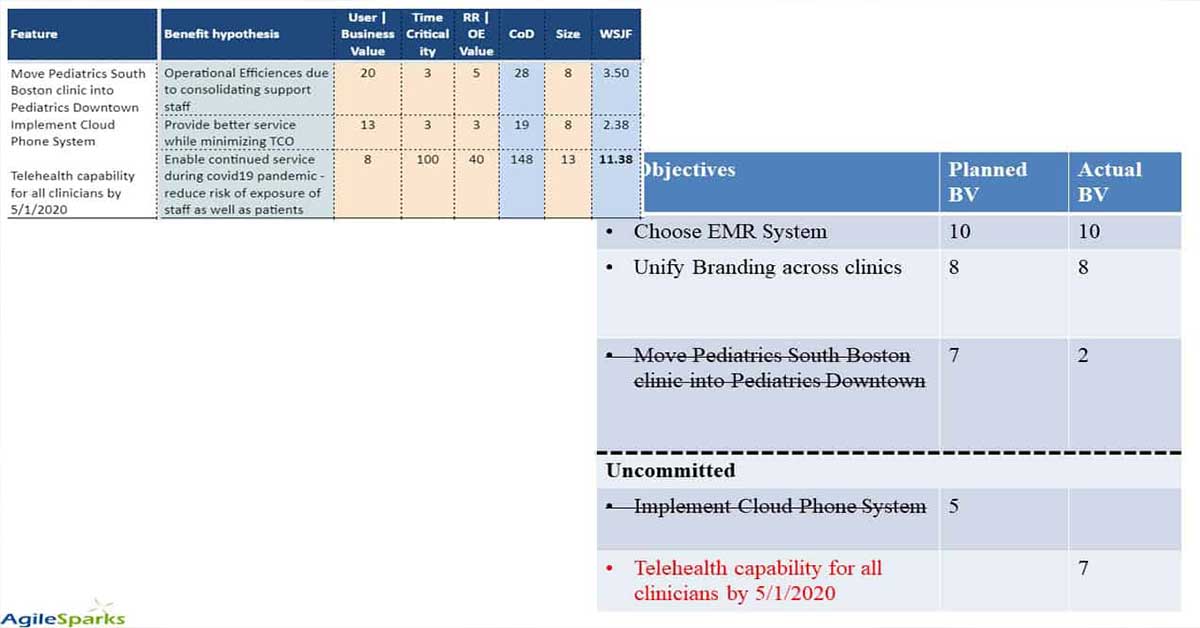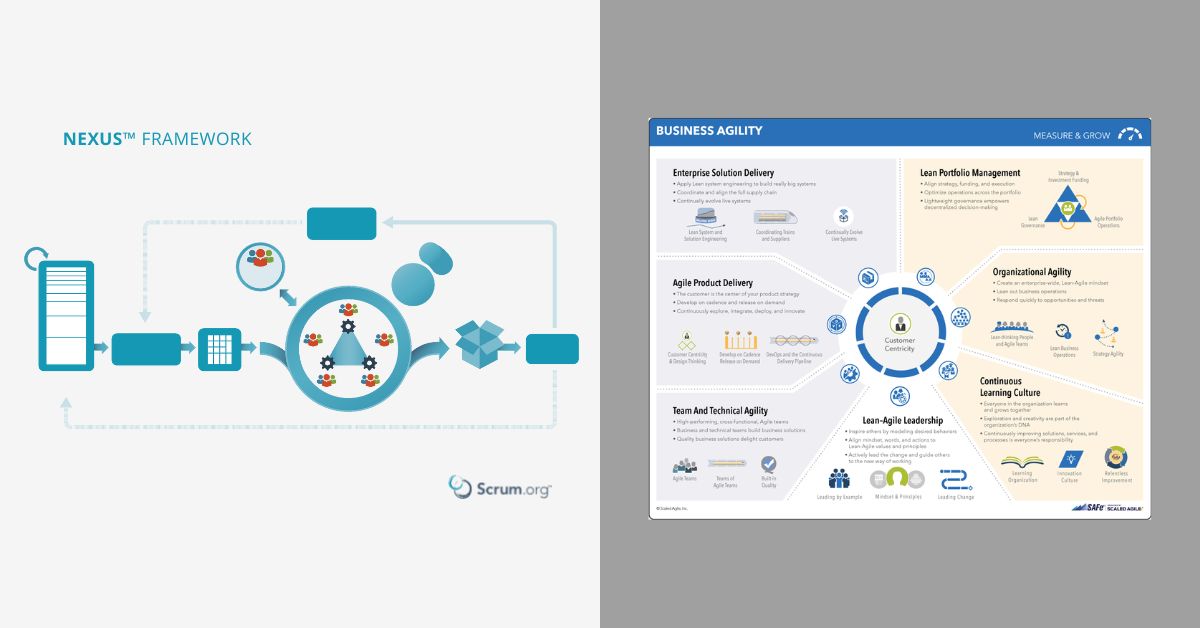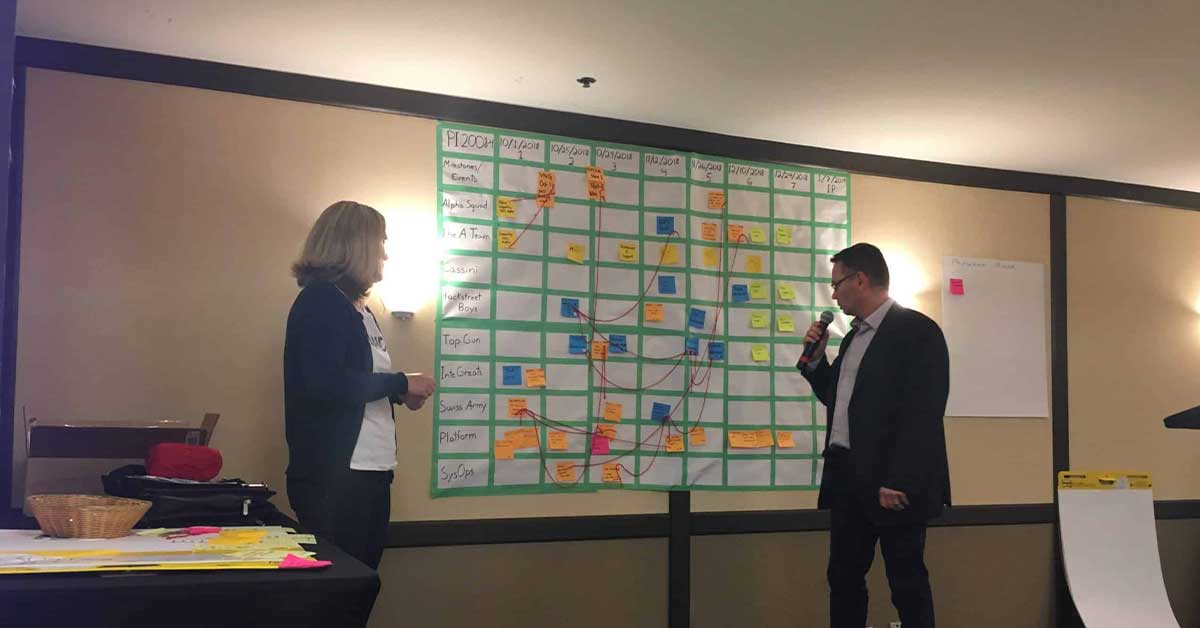
Working towards Sustainable Pace in Scrum, SAFe and Kanban
Aiming towards Sustainable Pace “Agile processes promote sustainable development. The sponsors, developers, and users should be able to maintain a constant pace indefinitely.” – The
Home » SAFe

Aiming towards Sustainable Pace “Agile processes promote sustainable development. The sponsors, developers, and users should be able to maintain a constant pace indefinitely.” – The

SAFe 5.1 doubles down on the importance of organizing around value. SAI SAFe Fellow, Andrew Sales will cover new and updated guidance for effectively identifying Operational and Development value streams to maximize the value you’re creating for your organization and accelerate time to market.
AgileSparks SPCT Yuval Yeret will bring his experience from working with dozens of enterprise-level technology companies to share practical tips and techniques that can be used with SAFe 5.1 to combine customer-centricity and Operational Value Stream identification. These patterns have helped both ISV enterprises, as well as IT organizations, organize around value.

Here’s a frequently asked question in the SAFe community: I wanted to understand what SAFe says about someone who wants to go faster than 2 weeks of iteration? I mean the whole PI concept is based on 5 iterations worth of planning. What if a team/organization wants to develop and synchronize faster than 2 weeks? Is speed going to be compromised by following the standards of PI cadence?
Here’s my take:
Adjusting Cadence Length in SAFe – Can you? Should you?

How do we handle Scope Changes in a SAFe Program Increment?
A question about handling scope changes in SAFe was posed recently on a forum I’m participating in (The SAFe Community Forum). This is a question posed regularly in training and on ARTs I’m coaching so I thought I’d provide my thoughts here.

Comparing Nexus and SAFe – Similarities, Differences, Ideas.
I’ve been asked several times now about Nexus and SAFe – what are the similarities, differences, etc. If you’re not familiar with either Nexus or SAFe I recommend taking a look at the Nexus Guide and the SAFe whitepaper first.

Learning from the SAFe Program Dependency Board
The SAFe Program Board or Program Dependency Board is a key artifact used in PI Planning and Execution. The ART Teams and Stakeholders used it to align, anticipate risks, and adapt the plan accordingly.
This “inspection and adaptation” of the plan based on insights from the Program Dependency Board is “first loop learning” – making changes in the plan based on what we see.

Scaling Agile Reading List Dave Snowden “Put brutally SAFe Implementation Roadmap – Scaled Agile Framework Implementing – Scaled Agile Framework portfolio+kanban Here Be Dragons –

Certified SAFe® Release Train Engineer. – Scaled Agile piplanning App Distributed PI Planning – Scaled Agile Framework Agile Processes Demo Board, Online Whiteboard for Visual

At AgileSparks, we’re known for speaking out against what we call Agile Theatre where a company goes through the motions of adopting Agile but stops short when it comes to changing the way the business operates. Real agility affects every aspect of an organization and therefore, requires a massive cultural and operational shift.
SAFe is a path to agility, but the organization does the heavy lifting

In the last couple of years, I’ve been writing about SAFe on the AgileSparks Blog, providing guidance articles for the SAI, and creating some complementary approaches and services in the SAFe context. All are based on experiences in the trenches helping AgileSparks clients achieve agility at scale. I recently completed a curated collection of some of my favorites and started to provide copies of this book to participants of my Implementing SAFe and RTE classes.
Request for additional information and prices